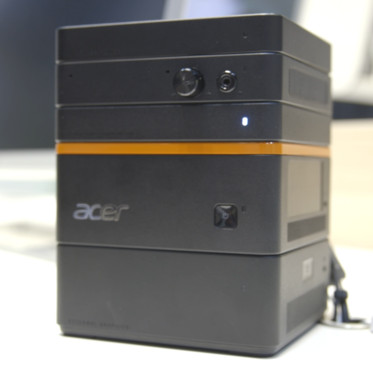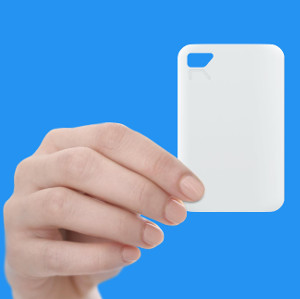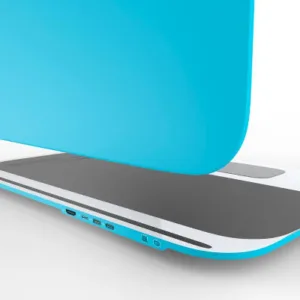Keyssa is a new company – to me anyway – that has been developing a connection technology that is based upon the 60 GHz band. After 6 years of R&D, 150 patents and $50M in investment from companies like Intel Capital, Dolby Family Ventures and the Samsung Strategy & Innovation Center, the first product using their technology is due to hit the market this March.
We spoke with Steve Venuti, who joined the company about a year ago as their VP Strategic Solutions after a 12-year stint with HDMI Licensing. He said he can’t release the name of the company but it is a “Tier 1 OEM” with a detachable tablet application.
The company’s web site is a bit thin on explaining their technology, so we asked Venuti to provide some more details. He described the technology, which they call “Kiss Connectivity” as a touch connection-type connector. There is physical connection between devices, but there is no wire between them – just touching (or very close proximity) connection. So, it is like NFC in this regard.
The device operates in the 60 Ghz band and can provide a data link at 6 Gbps. That’s fast enough to transfer a 2 Gb file in about 5 seconds. Want more speed, just add another transmit/receive pair for an extra “lane”.
The device itself is quite small coming in a 5×5 mm package that is 1mm height making it easy to integrate into mobile devices. It has extremely low latency (500 picoseconds), very low power (12 picojoules per bit), no RFI/EMI signal interference and low cost. Venuti wouldn’t give a specific price but added that the product was designed for mass market implementation. “We optimized our device for these qualities and the short distance connection,” noted Venuti. “The 60 GHz band is also used by WiGig (to support 802.11ad) and others, but these applications require higher power, cost more and have a more limited data rate of around 2 Gbps. We are focused on solely on replacing the mechanical connector.”
There is no doubt that many users and product planners want to have wireless connectivity, but there are challenges here like complex antenna design, power consumption and variable connectivity. Wired connections offer more reliable connectivity, but they can limit designs because of their physical configurations, mechanical reliability issues and potential EMI problems. That’s why Kiss-embedded electromagnetic connector was born.
Venuti explained that their connector-less solution is agnostic to transfer protocol. That means it can transport USB 3.0, DisplayPort, SATA or PCIe protocols just as a wire would in a point-to-point connection. There is no software to load or set-up once embedded in the product – it just works, claimed Venuti.
We then discussed a number of applications where a wireless connection can make sense. These fall into two broad categories – closed systems where the product includes the transmit and receive component and open systems where a product contains one or the other device.
The above mentioned tablet – docking station/keyboard application, which is coming to market first, is a closed systems example. Devices are embedded on both sides of the connection and talk to each other so it is more sophisticated than a simple transmit/receive configuration. The result is the elimination of a mechanical connection and fast data transfers. The docking station then has legacy connection to other peripherals. This concept can be extended to a phone docking station as well. This seems like a no-brainer to me.
With these examples, it seems that adding wireless charging would be a good idea as well – and this is perfectly possible, notes Venuti.
One of the more interesting opportunities is the idea of modular computing connectivity. Here, the idea is to build a PC based upon modular components that do NOT have a backplane for communication and integration. Products from Micro Lego Computer, Lenovo and Acer already exist such as the Acer Revo. Venuti thinks embedding their Kiss Connectivity receiver and transmitter in each of these PC building blocks would facilitate high speed data transfer and eliminate cumbersome cables. (actually, I think they use pogo pins – so don’t usually use cables – Man. Ed.)
 |
| Acer REVO |
This concept can be extended to server farms where computing blades can also communicate using 60 GHz proximity connections. “Another use identified by manufacturers of computing devices is board-to-board communication,” noted Venuti.
An example of an open system is phone-to-phone transfer. In this case, your buddy’s phone needs to have a Kiss Connectivity transceiver in order for the transfer to work.
Another example is a “personal storage card.” Imagine this as a credit card sized flash memory device with transmit/receive modules from Keyssa. This can be used to store your confidential medical information or to download movies from a kiosk. A reader would be necessary to access the data from this device, which could then be connected to your TV or a monitor.

The Keyssa connector started sampling in 2015, so you should contact the company if you are interested in this technology. (CC)

